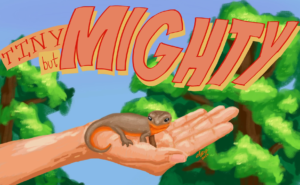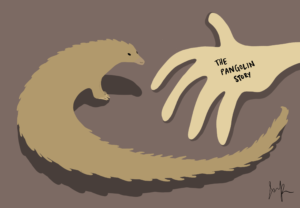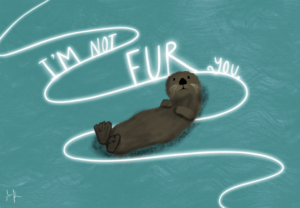Illustrated by Julianne Park
Animals are not entertainment.
Humans have normalized the capture, torture, and exploitation of innocent living wild animals. You probably know the tragic incidents of Harambe and Tikium. But they are not alone. Six days before Harambe’s death, two lions were shot and killed because a man entered their exhibit in May 2016. Polar bears at the now-closed Prospect Park zoo were killed by police officers after a boy climbed into their enclosure.
Now you may begin to see a pattern. Captive animals. Human interference. The death of the animals.
After Harambe’s death, one person commented on the Cincinnati Zoo’s Facebook page, “Once again, an innocent animal pays the ultimate price for human stupidity.” But why was Harambe in a zoo in the first place? Why was Tikium in an artificial water tub and not the ocean? Why are wild animals still showcased for human entertainment?
One answer is the fact people still attend these kinds of shows and exhibits. Whether aware or not, people still visit SeaWorld, circuses, and places that exploit animals.
What can WE do? Simple.
Stop visiting these facilities.
After the pandemic, the world was on lockdown, and people were quarantined for months. Now that you know what it’s like, imagine being quarantined your entire life. In a small cage. Or a small tub. It’s only a matter of time before anyone goes crazy in these circumstances. In fact, there is a word for this stereotypical behavior of captive animals: zoochosis.
Zoochosis includes animal self-harm, pacing, walking in circles, swaying, and irregular behavior. While most zoos and facilities keeping animals in captivity claim that they work for a good cause and donate a portion of their money to conservation efforts, according to a former zoo director, David Hancocks, “less than 3% of a zoo’s budget goes to conservation, while the majority goes towards ‘hi-tech exhibits and marketing efforts to lure visitors'” (Animals Australia).
In truth, the sole purpose of zoos (let alone theme parks like Seaworld) exists for one thing: profit. Furthermore, in order to sustain the business, facilities will do everything they have to do to fulfill their desires. This includes breeding baby animals in captivity for surplus animals, abusing and torturing animals to make them listen or “behave,” killing animals to make more room, and capturing more animals from the wild to draw more visitors.

Animal owners will also use whips, bullhooks, chains, electric prods, collars, and muzzles in order to force animals to perform and to listen.
There’s a reason why animals are in the wild. They are wild. So, don’t be surprised when they attack. Don’t be surprised when they don’t listen to people because that’s not what they’re meant to do.
Stop going to animal theme parks, zoos, circuses, safaris, and shows. Watch a documentary about animals instead. Research their habitats and the role they play in their ecosystems. Read a book about their behavior, food sources, or biology.
Animals are not entertainment.
Check out these links for more information and ways to help.
https://www.animalsaustralia.org/features/things-we-need-to-stop-telling-ourselves-about-zoos.php
https://www.change.org/search?q=seaworld
https://aldf.org/issue/animals-in-entertainment/
orks Cited
Animals Australia. “Since the Eye-Opening Documentary “Blackfish” Hit Screens, the World Has Woken up to the Cruelty Of.” Animalsaustralia.org, 8 Jan. 2018, www.animalsaustralia.org/features/things-we-need-to-stop-telling-ourselves-about-zoos.php.
“Https://Twitter.com/Kearion/Status/737964435063644160.” Twitter, twitter.com/kearion/status/737964435063644160. Accessed 7 Feb. 2023.
“National Geographic.” National Geographic, news.nationalgeographic.com/news/2003/11/1113_031113_zoorole.html. Accessed 7 Feb. 2023.
The views and opinions expressed are those of the authors and do not necessarily reflect nor represent the Earth Chronicles and its editorial board.









